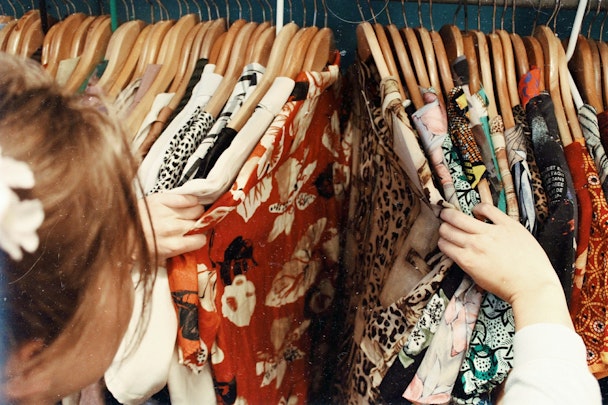How can marketers continue to find value in fast fashion?
Michael Weir and Nick Handley of agency Impression explore the changing landscape of consumer behavior in fast fashion.

How deep are fast fashion's pockets? Agency Impression investigates / Becca McHaffie via Unsplash
Over the last few years, the fast fashion industry has had to navigate unprecedented change, reacting and adapting to increasing consumer demands and changing buyer behaviors.
The rise of the conscious consumer has put brands under pressure to operate more ethically and the ongoing cost of living crisis has increased price sensitivity while simultaneously decreasing brand loyalty. Despite this, many advertisers are still opting for short-term conversion-focused tactics versus longer-term brand-building activity and tactics to improve the end-to-end user experience.
It’s a challenging time to operate in this space.
The solution? A stronger focus on driving emotional impact through marketing messaging will increase your brand’s competitive advantage. Your ability to thrive will be based on your ability to evolve and tackle dynamic digital and socio-economic challenges.
Social shopping and creator collaboration
The fast fashion space undoubtedly still offers enormous opportunities for brands looking to drive year-on-year revenue growth, with consumer spend estimated to reach $184m by 2027. But how can you make the most of this?
While Shopping Ads remain a proven tactic to convert customers, gen Z’s browsing habits leverage social platforms to research, discover and make a purchase. Promoting products through platforms like TikTok is no longer a nice to have; discount its power at your own risk!
Fashion brands have typically focused on product-centric promotional material via social channels using dynamic product ads, product-focused carousels, and static imagery. With the rise of UGC, brands are collaborating with content creators to increase their market share and virality; in today’s landscape, the influence and macro-impact of creator campaigns can offer tremendous value to your wider marketing mix.
Boohoo is a great example: over the years, it has crafted an influencer and content creator strategy, shifting away from solely focusing on its product and incorporating influencer-led landing pages on its site.
Advertisement
Designing delightful digital experiences
Communicating a compelling story through a diverse channel mix will support both brand and performance goals. Leverage awareness activity to build an emotional connection with your customers alongside paid media strategies to drive conversions and on-site experimentation to reduce cost per acquisition (CPA). Consistently show up and communicate with customers via various mediums at various stages in their journey.
When designing digital experiences, it’s important to consider both top-down and bottom-up attention.
From a bottom-up perspective, brands must carefully consider the most salient parts of the page or images using color to guide users to pay attention to key messages. Models and faces are often high in salience; people are hardwired to look for them. Novelty and emotion can increase user engagement with landing pages and excite potential customers into action.
From a top-down perspective, interfaces need to make it easy to find the content that people are looking for with clear calls to action and a taxonomy that is easy to process.
Advertisement
Same same, no difference
Fast fashion is a saturated market, and one with little differentiation – just look at the websites of, say, Nasty Gal, Missguided, and Rebellious. The rise of inflation, increasing operating costs and the need to compete on brand versus price are all factors limiting brands.
This brings an opportunity to create, trademark, and leverage visual assets to cut through the noise of your competitors. Think unicorns and use influencer collaborations and exclusivity model contracts to prevent bleeding into other brands. Champion consistency and creativity.
Understand what makes your brand different and distinct by conducting both quantitative and qualitative research to understand how your customers, and the wider market, perceive it.
A Nielsen study found that on average, consumers’ recall of ads drops by 50% in the first 24 hours after seeing them. So to keep your brand resonant and consumers engaged, you need to push a blend of creator- and product-led assets to the right audience at the right time, telling a story. Consumers expect more from brands and telling a consistent story based on audience signals with mixed and tested creative can encourage recall.
Suggested newsletters for you
Conscious consumers
Many shoppers are becoming more concerned with the environment and sustainability. Brands that can genuinely and authentically talk about their eco-friendly USPs, green values and involvement in initiatives (such as environmentally-friendly posting, packaging, and practices) will reap the rewards.
If you’re still on your journey to introducing eco-friendly initiatives, be transparent. Let your customers know what you’re working on and in the meantime, find initiatives that will be easier for your brand to action, with a genuine impact on the things that you and your audience value.
But be warned: today’s consumer sees straight through greenwashing. According to one study, 30% of consumers “believe brands are not completely transparent with their practices when using terms such as ‘eco-friendly’, ‘sustainable’ or ‘green’ in their marketing and packaging. [And] 24% believe brands just use such terms to sell products”.
There is an argument to be had about whether fashion companies should instead focus on what they traditionally do best, delivering the latest trends at the lowest prices. Judging by Shein’s revenue, it certainly looks like consumers still have the hots for fast fashion.
Content by The Drum Network member:

Impression
We are Digital Growth Specialists helping ambitious brands push boundaries and drive impact. We define and deliver integrated digital strategies that transform our...
Find out more
